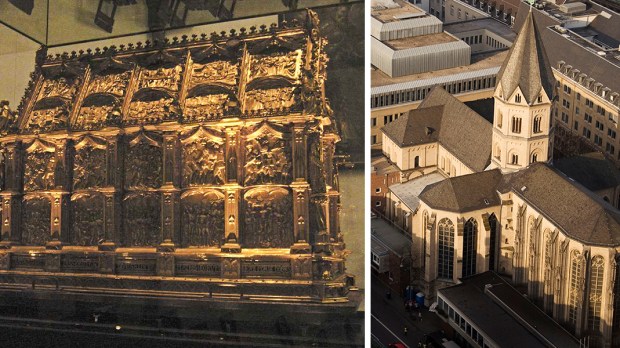Lenten Campaign 2025
This content is free of charge, as are all our articles.
Support us with a donation that is tax-deductible and enable us to continue to reach millions of readers.
The fire at the Cathedral of Notre Dame revealed something many people might not have known—European churches contain very ancient relics, even by European standards.
In the case of Notre Dame it was Crown of Thorns.
One church in Cologne, Germany, has something even older: a reliquary containing relics of the Maccabean brothers. According to the account in 2 Maccabees, the brothers resisted the efforts of the Hellenistic tyrant Antiochus to exterminate faith in God from the Jewish nation in the 2nd century BC.
The tyrant’s men cut off the tongue, hands, and feet of one brother before throwing him in a large pan to be boiled alive. He died as the other six and their mother looked on.
The next brother likewise refused to relinquish his faith and was tortured and killed. “You accursed fiend, you are depriving us of this present life, but the King of the universe will raise us up to live again forever, because we are dying for his laws,” he said before breathing his last (2 Maccabees 7:9)
One after another each was slaughtered, followed finally by the mother.
Their relics were apparently kept in a Jewish synagogue in Antioch, which eventually came under Christian control, according to a German article on the Archdiocese of Cologne website. The relics were later transferred to Constantinople and Rome and from there to Cologne in 1164. The relics resided in a Benedictine monastery for nuns until 1808 when it was abolished and the reliquary was moved to St. Andrew’s Church, according to the archdiocese.
The reliquary is a magnificent gilded copper box that looks like a miniature church. A total of 40 relief scenes coat the box, telling the story of the Maccabees along with parallel scenes from the life of Christ and Mary. For example, Christ was whipped as were Maccabean brothers, and His crowning with thorns recalls their scalping. (The German site has a complete list of all 40 reliefs.)
On the south side of the box is a Latin inscription: “Archbishop Reginald brought to this … field in 1164 the seven bodies of the Machabeans who indicate the suffering of our Savior, as well as their magnificent Mother Salome, who anticipated the pains of Saint Mary.”
According to one source, the box contains the skulls of all seven brothers. Although the relics are more than 2,000 years old, the reliquary itself dates back to the 1520s, when it was crafted by Peter Hanemann. The reliquary is available for public viewing in a shrine in the church.

